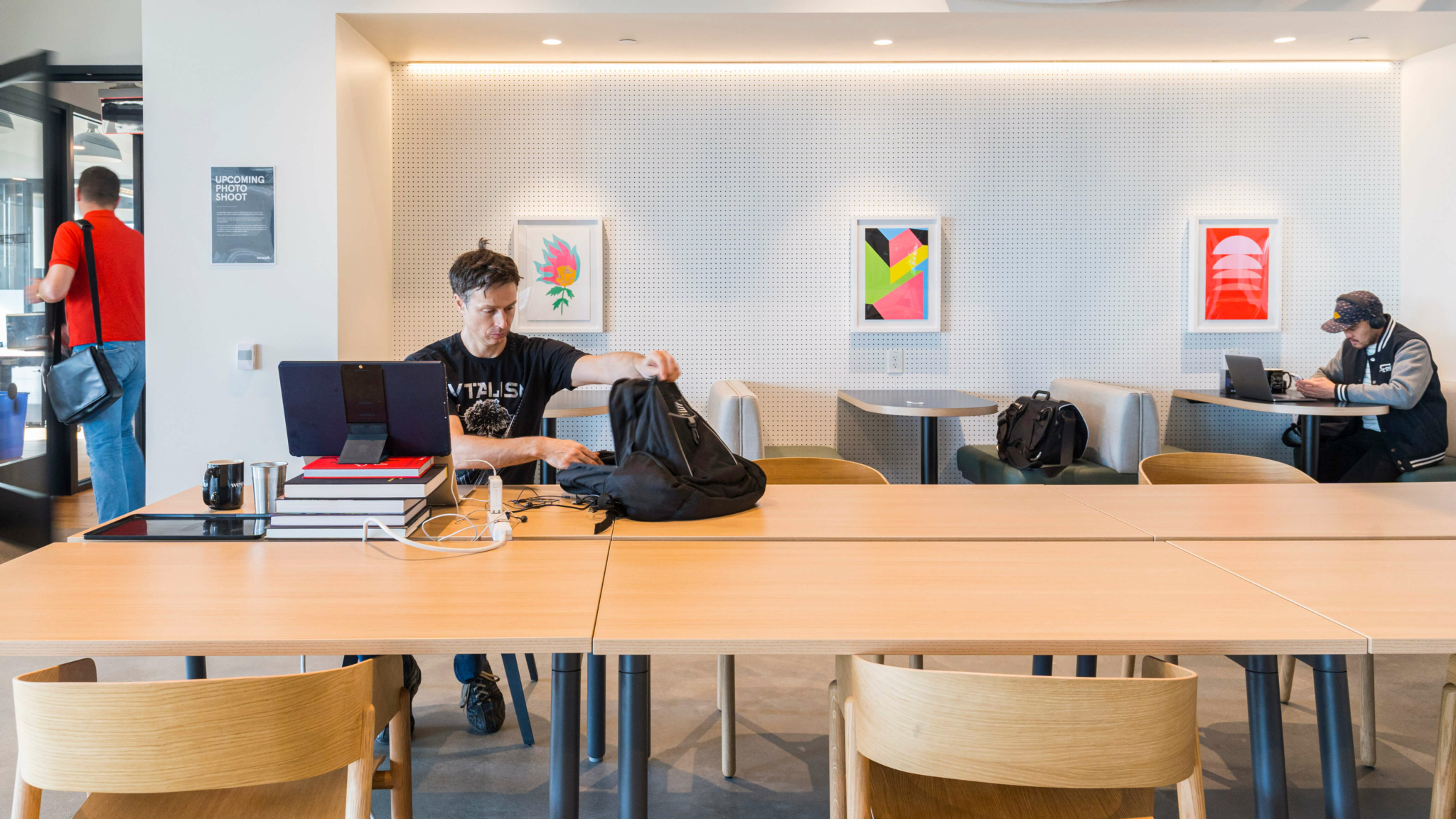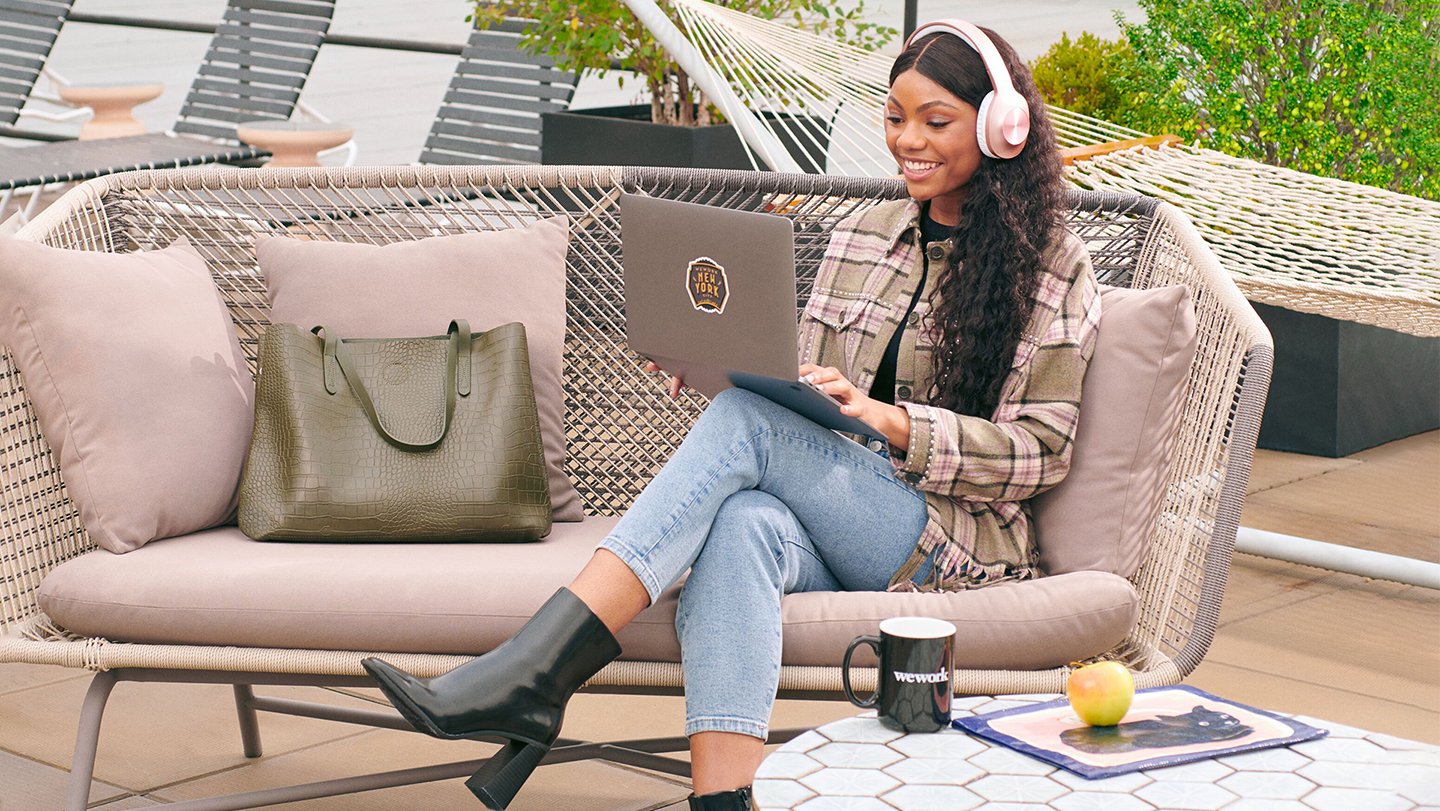As colleges and universities across the United States take tentative steps toward a return to normal, measures are being taken to prevent the spread of COVID-19, including encouraging or even requiring vaccinations and limiting classroom density. In the longer term, it’s apparent that investments in remote learning will likely change the way we access higher education forever.
Yet amid these developments, institutions continue to face the challenge of how to best support underserved students, including those who are first-generation, low-income, or racial or ethnic minorities. In a recent webinar sponsored by WeWork and hosted by The Chronicle of Higher Education, a panel of university professionals shared what they’ve been doing to build community for these students, both on and off campus. Watch a recording of the full conversation on demand here, and read on for some of the key themes that surfaced.
A consistent, multipronged communications approach works
The first phase of building community is enrollment—and outreach to students before the first day of class is critical to their success. Panel moderator Sarah Lipka cited a statistic from the National Student Clearinghouse Research Center that fall 2020 saw a 6.8 percent drop in graduating high school students enrolling in college. This decline was more than twice as steep for students from low-income high schools than for their higher-income counterparts, underscoring the lack of resources for underserved populations.
By tracking students who applied to college but didn’t complete the steps to enroll, Pasadena City College was able to identify applicants who might need additional support, said Dr. Cynthia Olivo, vice president of student services at the school. When texts and emails weren’t effective, faculty and school administrators made phone calls to each student’s home. This way, the school was able to connect with students and their families, tell them about resources for various communities, and increase enrollment of underserved students.
Our call as equity-minded practitioners is to ensure that we’re placing the resources where they’re needed the most.
Dr. Cynthia Olivo, VP of student services, Pasadena City College
Once enrolled, students needed to feel safe and comfortable arriving on campus. At Jackson State University, this meant arranging access points for COVID-19 testing and vaccinations, as well as distributing move-in appointments across three days rather than all at once, explained Dr. Susan E. Powell, vice president of student affairs. Orientation was then communicated by video rather than face-to-face, so students could select times that worked with their moving schedules.
Administrators have found that throughout the semester, it’s helpful to have a centralized place where everyone can see information about upcoming community activities. Reed College does this through both a biweekly email newsletter and nontraditional tools, like Discord, said Dr. Karnell McConnell-Black, vice president of student life.
“Our students are saying this is where they’re at—let’s go to them on those platforms,” Dr. McConnell-Black said. Using multiple communication methods helped connect more students, both remote and on campus.
Every student body is made up of micro-communities
The panel agrees that the foundation of their work lies in listening to students. Dr. McConnell-Black holds discussion circles twice a week both virtually and on campus, where students can share whatever is on their minds.
“Maybe it’s something that’s going on at home, maybe it’s something that’s happening in the residence halls, maybe they’re having some conflict with roommates, or maybe they’re just homesick,” he said. Sometimes he hears conflicting experiences, he says, and these multiple angles give him a clearer picture of underlying issues.

Bruce Haymes, WeWork consultant and former chief partnership officer at Northeastern University, noted that a first-generation student from a low-income household might have a very different experience from their peers—even though they’re part of the same campus. Micro-communities face their own challenges, and Haymes encouraged everyone present to ask what can be done for these individual communities to “ultimately achieve better rates, better retention, and better outcomes.”
Margaret McFadden Carney, the university architect at Cornell University, looks for answers in people’s movements—and modifies spaces to meet their needs. “The most important thing we’ve found is to have a variety of space types, because in the course of the day, students are doing all kinds of different activities,” McFadden Carney said. “The campus is almost like a great dining hall, where you can pick a booth to sit in and [have] quiet conversation, or you can have a table of 12, or you can sit by yourself at the bar.” By creating a variety of solutions based on attentive listening and observation, more students can benefit and thrive.
Virtual and physical spaces should be integrated
During the pandemic, virtual interactions became more central to a sense of community than ever before. Dr. Thomas Ellett, chief experience officer at Quinnipiac University, says one of the most popular initiatives they tried was a virtual roommate program, which they plan to continue for commuter students moving forward. “It certainly wasn’t the same,” he said of the past year, “but creativity reigned.”
As students returned to Quinnipiac’s campus and practiced social distancing, they took advantage of the campus’ location next to Sleeping Giant National Park. Students held reflective yoga sessions after hikes, attended events centered around food trucks, and participated in group outings for residence hall pods called “pods on the quad.”
Outdoor space has become more of a feature at Jackson State University too. “Here in Mississippi, it doesn’t get that cold,” Dr. Powell shared. “We’re getting ready to put down an outdoor study space so students can use some of their green area to study and interact.” The school’s newly renovated commuter lounge also features an outdoor extension, which makes it more discoverable for students who didn’t know it was there before.

The materials used to build a space can also make it feel more accessible and more safe. Carney explained that by using glass and allowing transparency into rooms, students can see what happens in academic departments they may not have had prior exposure to. They can also evaluate an environment before deciding to enter.
In terms of integrating physical and virtual spaces, she said, “[remote work] is not going to go away with COVID, so we’re trying to understand how we can improve on what we’ve been doing, so that people who are connected remotely have the same sense of belonging in that discussion as the people who are literally around the table.”
Haymes has a vision of a hybrid learning system where students can attend university remotely while also having access to a physical education hub where they can network with fellow students and access resources like reliable wireless internet. WeWork has already been partnering with universities to set up these types of satellite campuses, which can be designed to suit student needs and reflect an institution’s culture. The hope is to increase capacity at schools in a way that will benefit underserved students and higher education institutions alike. As Haymes sees it, “We now have a seat for every student in the United States who wants to go to school.”
By harnessing recent advancements in hybrid learning and continuing the community-building work of these panelists and others, higher education could become more equitable than ever before.
Tria Chang is a freelance writer whose work has appeared in The Washington Post, Ozy, and Reader’s Digest, among other publications. She is also an editor at Mochi Magazine, the longest-running online publication for Asian American women.










